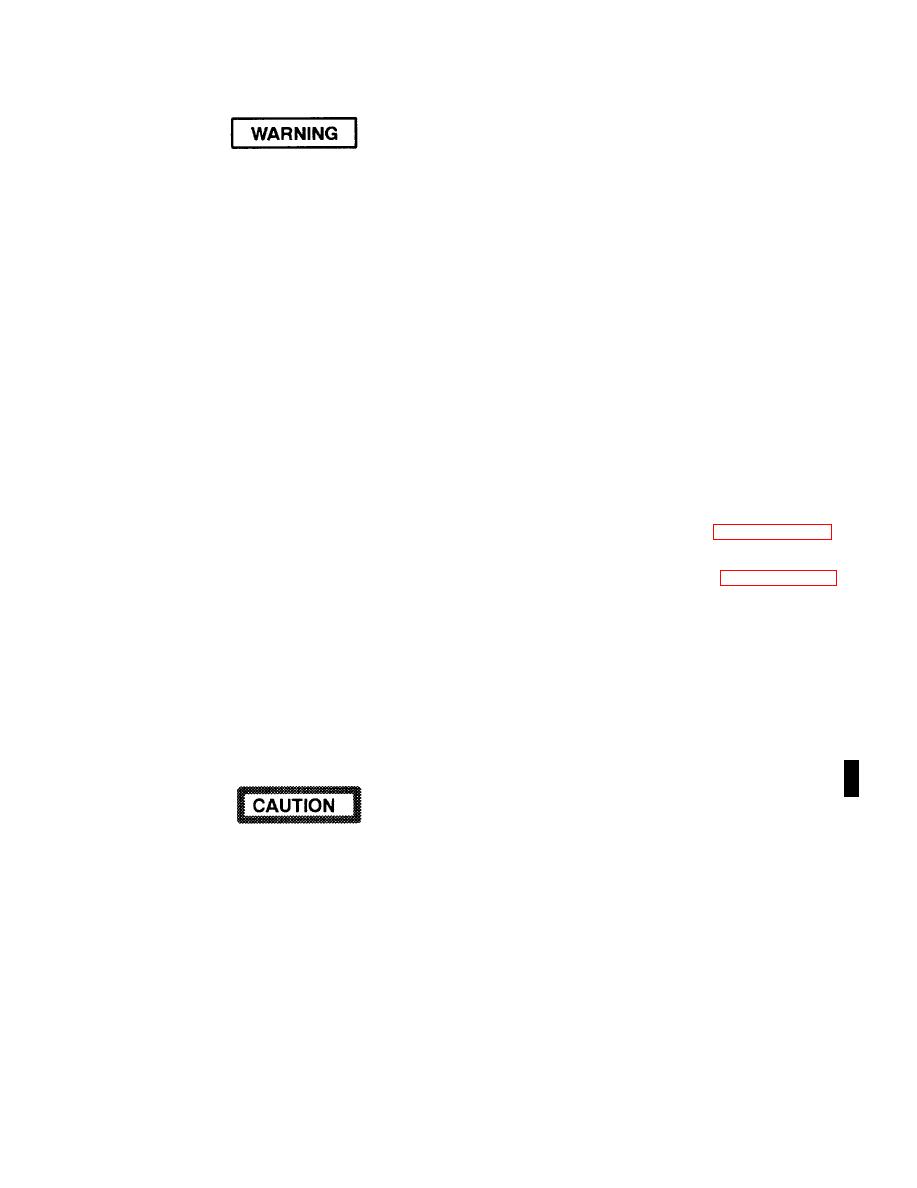
TM 55-1500-345-23
deterioration. Precautionary measures
shall be taken to prevent paint and paint
removal waste from contaminating
lakes and streams. Some of the chemi-
Military Specification MIL-R-81294
cals utilized for painting and paint
may be used on aluminum or magne-
removal require treatment or other spe-
sium substrates. Military Specification
cial control prior to disposal. Disposal of
MIL-H-81294 remover contains highly
materials shall be accomplished under
volatile methylene chloride as a constiu-
the direction of the installation facility
ent. Its vapors are hazardous to breath
engineer and MEDDAC Health and
and/or will cause skin burns. Although
Environment Activity in accordancewith
methylene chloride is not flammable,
applicable directive, and in a manner
other constituents are. When the blan-
that will not result in violation of local,
keting effect of methylene chloride is
state and federal pollution criteria.
lost through its volatility, the remaining
Guidelines for disposal are cited in AR
constituents may, under certain condi-
200-1.
tions, become ignitable. Any paint
remover on the skin or in the eyes must
be flushed immediately and copiously
ping existing paint to bare metal is determined by
with water. In addition, medical treat-
the accessibility of the area, judgement of the
ment should be sought promptly in the
degree and type of corrosion and degree of flaking
case of contact with the eyes. Protec-
or peeling of paint. Stripping may be accomplished
tive clothing and equipment such as
by:
rubber gloves, aprons, boots, approved
Chemical Remover. See paragraphs 2-4,
a.
organic vapor cartridge respirators (TB
2-6 and 2-7 below.
MED 502), appropriate eye shields and
goggles shall be used as necessary to
Mechanical Means. See paragraph 2-9
b.
provide adequate protection for person-
below.
nel.
CALLY STRIPPED.
The painting operation should be
reviewed by the installation safety off ice
and MEDDAC Health and Environment
NOTE
Activity to determine the presence of
any operational hazards and to make
MIL-R-81924 will deteriorate most non-
recommendations for either eliminating
metallic structures. Non-metallic sur-
or controlling those hazards found.
faces may be stripped with specific
AMCOM or local engineering approval.
Subsequent damage must be repaired.
a. Areas Not to be Exposed to Paint Remover.
Care must be exercised when using any
De-icer boots, wing and tail.
(1)
paint remover on fiberglass/plastics
(e.g., antenna, access doors, fairings,
(2) De-icer element, leading edge of engine
canopies) surfaces to avoid damage.
cowl-air intake.
Spot tests must be accomplished, on
inconspicuous surfaces to determine
(3) Wheel wells.
compatibility of any remover, and a
(4) Propellers.
remover selected which does not cause
Change 8
2-2


